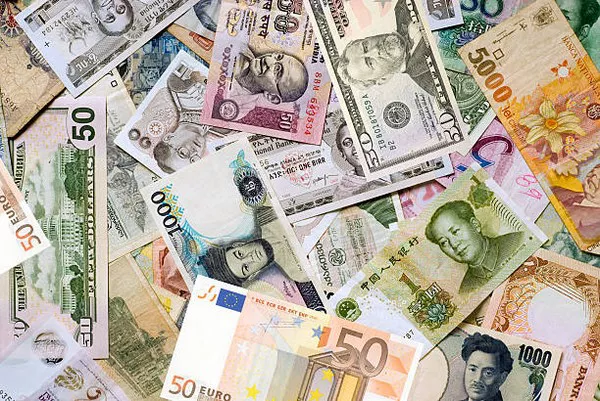In Mexico’s vibrant currency landscape, each banknote holds its own unique value and significance, reflecting the nation’s rich history and cultural heritage. From iconic figures to symbolic motifs, Mexican bills tell a tale of resilience and progress. However, among the array of denominations, one question often arises: What is the most valuable Mexican bill? In this article, we embark on a journey to uncover the answer, exploring the history, significance, and practical implications of Mexico’s most valuable banknotes.
The Evolution of Mexican Currency:
Mexico’s currency system has evolved significantly over the centuries, mirroring the country’s economic development and political transformations. From the colonial era to the modern-day, Mexican banknotes have undergone numerous iterations, each bearing witness to the nation’s triumphs and challenges.
The earliest forms of Mexican currency date back to the Spanish colonial period, when coins and reales circulated as the primary medium of exchange. It wasn’t until the early 19th century that Mexico gained independence and established its own currency, including paper money issued by various regional governments.
In the 20th century, Mexico underwent a series of currency reforms and modernization efforts, leading to the establishment of the Banco de México (Bank of Mexico) as the nation’s central bank. This paved the way for the introduction of standardized banknotes and the adoption of innovative security features to combat counterfeiting.
Today, Mexico’s currency system comprises a diverse range of denominations, from the widely circulated 20 peso bill to the less common higher denominations, each bearing distinct designs and historical significance.
Identifying the Most Valuable Mexican Bill:
Determining the most valuable Mexican bill involves considering multiple factors, including face value, rarity, historical significance, and collector demand. While face value provides a straightforward measure of a banknote’s worth in monetary terms, other factors contribute to its overall value in the eyes of collectors and enthusiasts.
In terms of face value, the highest denomination currently in circulation is the 1000 peso bill, followed by the 500 peso bill. However, the most valuable Mexican bill in terms of collector demand and rarity may not necessarily be the highest denomination.
One notable example of a valuable Mexican bill is the 1000 peso banknote issued in 1988, featuring the image of Sor Juana Inés de la Cruz, a renowned Mexican writer and philosopher. Due to its limited circulation and historical significance, this banknote has become a sought-after collector’s item, commanding a premium price in the numismatic market.
Another valuable Mexican bill is the 500 peso banknote issued in 1984, commonly referred to as the “Benito Juárez” bill, featuring the image of Benito Juárez, a revered figure in Mexican history. Like its counterpart, this banknote is prized by collectors for its rarity and cultural significance.
Practical Implications and Usage:
While collector demand contributes to the perceived value of certain Mexican bills, their practical implications and everyday usage also play a crucial role in determining their worth. High-denomination banknotes, such as the 1000 and 500 peso bills, are commonly used for larger transactions and financial obligations.
Additionally, the availability and acceptance of Mexican banknotes vary depending on regional preferences and economic factors. While urban areas may prefer electronic payments and digital transactions, rural communities often rely on cash for daily expenses and business transactions.
Moreover, the condition and age of a banknote can affect its value and usability. Well-preserved specimens with minimal wear and tear are generally more desirable among collectors and may command higher prices in the secondary market.
Cultural and Historical Significance:
Beyond their monetary value and practical utility, Mexican banknotes hold cultural and historical significance, reflecting the nation’s diverse heritage and identity. The imagery and motifs depicted on banknotes often celebrate iconic figures, significant events, and natural landmarks that shape Mexico’s collective memory.
For example, the 200 peso bill features the image of Miguel Hidalgo y Costilla, a key figure in Mexico’s War of Independence, alongside scenes depicting the nation’s struggle for freedom. This banknote serves as a reminder of Mexico’s proud history and the sacrifices made by its heroes.
Similarly, the 50 peso bill honors the legacy of José María Morelos, another prominent leader of the independence movement, with images depicting his contributions to Mexico’s fight for sovereignty. These representations not only commemorate Mexico’s past but also inspire future generations to uphold the values of liberty and justice.
Investment Opportunities and Numismatic Trends:
As interest in numismatics continues to grow worldwide, Mexican banknotes offer attractive investment opportunities for collectors and enthusiasts. Rare and valuable specimens, such as the 1000 peso Sor Juana Inés de la Cruz banknote, can appreciate in value over time, making them valuable additions to investment portfolios.
Moreover, the scarcity of certain Mexican banknotes, combined with their historical significance, contributes to their appeal among collectors. Limited edition releases and commemorative issues often command premium prices in the secondary market, driven by demand from both domestic and international collectors.
For investors seeking to diversify their portfolios and preserve wealth, Mexican banknotes represent a tangible asset with intrinsic value and historical significance. Unlike stocks or bonds, which are subject to market fluctuations, rare banknotes offer stability and long-term growth potential.
See Also: Mexican Peso (MXN): Dimensions, Designs & More” href=”https://fxcurrencyconverter.com/archives/45462″>Coins of Mexican Peso (MXN): Dimensions, Designs & More
Conclusion:
In conclusion, the most valuable Mexican bill encompasses more than just its face value—it embodies a rich tapestry of history, culture, and economic significance. While the 1000 and 500 peso bills hold the highest face values in circulation, other factors contribute to the overall worth of Mexican banknotes, including rarity, collector demand, and cultural significance.
As Mexico’s currency system continues to evolve, collectors and enthusiasts alike will continue to cherish and preserve these tangible symbols of the nation’s heritage. Whether used for everyday transactions or treasured as collector’s items, Mexican banknotes serve as a testament to Mexico’s enduring legacy and resilience in the face of change.


